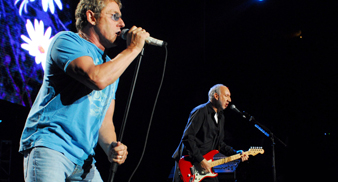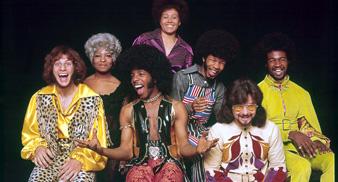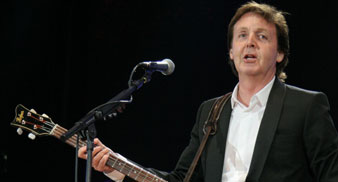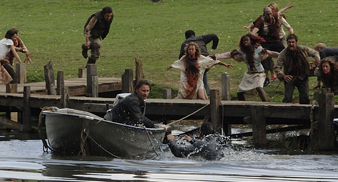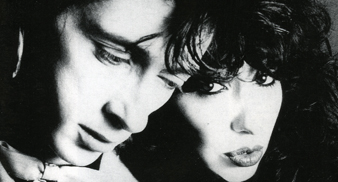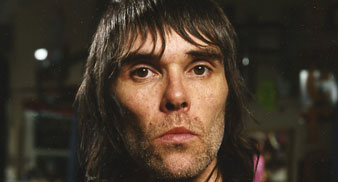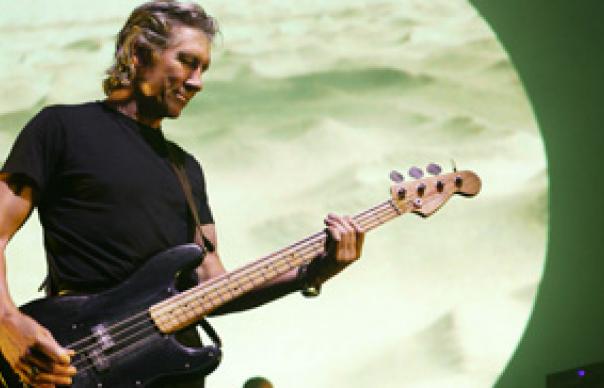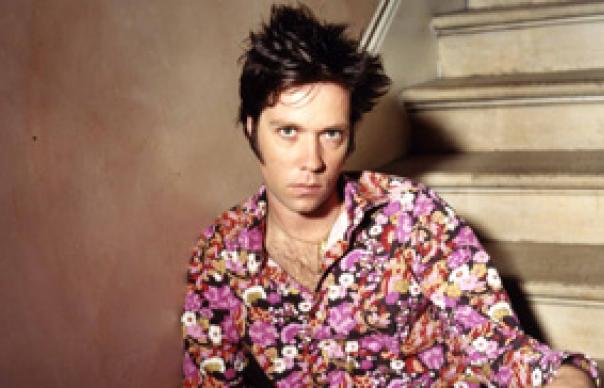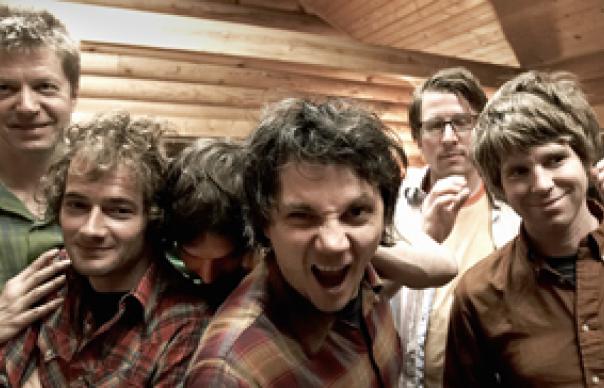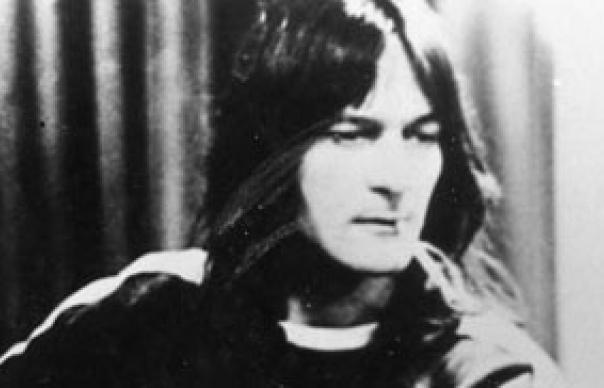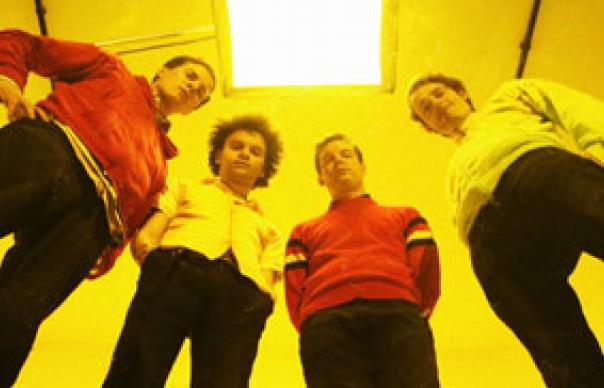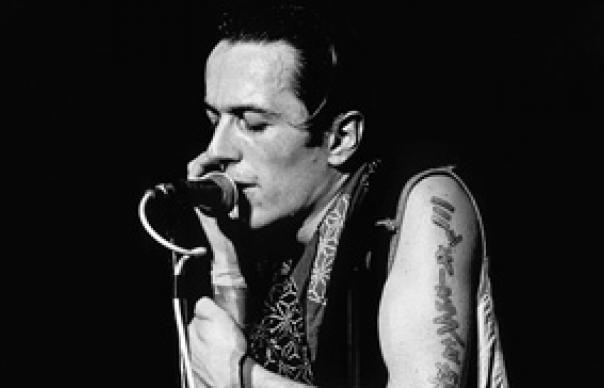Billy Corgan is not an easy man to like, but from time to time in his career he’s made some pretty good records. I should make it clear from the start that I’m hardly a Smashing Pumpkins obsessive: I liked the psych-grunge of “Gish” a lot, and I was distinctly impressed by the translation of ambition into a new kind of stadium rock on “Siamese Dream”.
The Smashing Pumpkins’ “Zeitgeist”
The Thrills Added To Knowsley Hall Event
West Coast influenced Irish group The Thrills are one of the latest artists to be confirmed for the Uncut-sponsored Knowsley Hall music festival. The event, the biggest of its kind in the North West, runs over two days, June 23 and 24, the same weekend as Glastonbury and is headlined by The Who and Keane, as well featuring a host of other big acts. The Thrills have just completed recording their third album "Teenager," and will be previewing new material at the Liverpool show, as well as playing songs from their million selling back catalogue. Local Radio 1 championed band The Wombats have also been added to the line-up. The Knowsley Hall bill includes several bands that hail from Liverpool including Shack, The Coral, The Zutons and Icicle Works. Day tickets start from £37.50 and weekend tickets are £70. More details about the line-up and tickets are available here from knowsleyhallmusicfestival.co.uk The full line-up confirmed so far is: Saturday June 23 Main Stage The Who /The Coral / The View/ The Thrills / Shack / Pete Wylie & The Mighty Wah MySpace Stage The Black Velvets/ The Loungs / The Alones / The Maybes / Miss King & The Kougars / The Quarter / Delta Fiasco/ Battle Of The Bands Winner Sunday June 24 Main Stage Keane / The Zutons/ Madness / Joss Stone / Ross Copperman / The Icicle Works/ The Wombats / The Orange Lights MySpace Candie Payne / The Aeroplanes / I Am Finn / Battle Of The Bands Winner
West Coast influenced Irish group The Thrills are one of the latest artists to be confirmed for the Uncut-sponsored Knowsley Hall music festival.
The event, the biggest of its kind in the North West, runs over two days, June 23 and 24, the same weekend as Glastonbury and is headlined by The Who and Keane, as well featuring a host of other big acts.
The Thrills have just completed recording their third album “Teenager,” and will be previewing new material at the Liverpool show, as well as playing songs from their million selling back catalogue.
Local Radio 1 championed band The Wombats have also been added to the line-up. The Knowsley Hall bill includes several bands that hail from Liverpool including Shack, The Coral, The Zutons and Icicle Works.
Day tickets start from £37.50 and weekend tickets are £70.
More details about the line-up and tickets are available here from knowsleyhallmusicfestival.co.uk
The full line-up confirmed so far is:
Saturday June 23
Main Stage
The Who /The Coral / The View/ The Thrills / Shack / Pete Wylie & The Mighty Wah
MySpace Stage
The Black Velvets/ The Loungs / The Alones / The Maybes / Miss King & The Kougars / The Quarter / Delta Fiasco/ Battle Of The Bands Winner
Sunday June 24
Main Stage
Keane / The Zutons/ Madness / Joss Stone / Ross Copperman / The Icicle Works/ The Wombats / The Orange Lights
MySpace
Candie Payne / The Aeroplanes / I Am Finn / Battle Of The Bands Winner
The Beastie Boys’ “The Mix-Up”
We're partying like it's 1994 here at Uncut this afternoon, because the new Beastie Boys album has arrived. It's called "The Mix-Up", and we're just grooving amiably to track seven, "Off The Grid". Actually, "Off The Grid" has just stepped up a grade and now sounds rather hefty, by the standards of this record so far. The good news about "The Mix-Up" is that it seems to be a big improvement on the last Beasties album, 2004's "To The Five Boroughs": if you remember, a stiff and uncomfortably worthy attempt to honour the precepts of early hip-hop. The bad news about "The Mix-Up", though, is that it's an all-instrumental album. At their best, Beasties albums have always felt like a slightly crazed mix'n'match: that sense of a band of hip dilettantes who'll get bored of straight hip-hop after ten minutes and work out their tensions with some bratty hardcore punk, then chill out with a bit of burbling jazz-funk. "The Mix-Up", like "To The 5 Boroughs", is not an eclectic record. Instead, it consists of 12 workouts, often led by Money Mark at the organ, which locate mellow, goatee-stroking grooves that were probably first traversed 30 or 40 years ago by The Meters. They're jams, I guess, though not quite so sloppy and loose as the ones - in very much the same style - which provided interludes on "Check Your Head" and "Ill Communications". "Suco De Tangerina" chucks a bit of dub into the mix. One song title - "Freaky Hijiki" - has the obligatory healthfood (in this case a quite nice seaweed) reference. And they're extremely pleasant tunes, being the work of three guys of a certain age and their mates, who've reached an unexpected level of technical competence, want to kick back in the rehearsal room, and clearly feel they have nothing to prove to anyone any more. There's an endearing warmth to tracks like "14th St Break", even when the Beasties are aping that '70s blaxploitation funk. I guess I was prepared to be disappointed by this record, and, even though it sounds a bit dated and self-indulgent, it's a lot more enjoyable than I expected. I'll try and write something more on it when I've listened to it properly. Still, though, should the Beasties really settle for this, when they can do so much more?
We’re partying like it’s 1994 here at Uncut this afternoon, because the new Beastie Boys album has arrived. It’s called “The Mix-Up”, and we’re just grooving amiably to track seven, “Off The Grid”.
Picking A Fight With Jeff Tweedy
“I can’t for the life of me understand how 50-year-old rock critics can pretend to like Babyshambles,” thunders Wilco’s Jeff Tweedy in the current issue of Uncut. “It just drives me nuts,” he goes on, building up a fairly impressive head of indignant steam. “I’m like: ‘How can you pretend to like that? What the fuck, are you serious?’ There’s now way,” he continues, not done yet. “You can’t – you have to be young. You have to be that age to do that, because you should know better by now?” Hey, really, Jeff? Well, thanks for sharing that with us. I don’t want to sound too sensitive here, and I’m absolutely sure Jeff doesn’t keep such close tabs on stuff I write to know how much Babyshambles mean to me – even at my advanced age, decrepitude and drool obviously now a messy part of my life as the sun sinks on what’s left of it – so perhaps I should also be careful about taking any of this personally. But what Jeff has to say – them’s fighting words, man. Over the last 14 months or so, I’ve seen Pete solo and Babyshambles in full-on band mode maybe 10 times, or almost once a month and I haven’t had to PRETEND on a single occasion that I’ve enjoyed them, I just have. So, yes, I guess I must be fucking serious about them. And I don’t listen to the staggeringly misrepresented Down In Albion or go to see them as often as I can in some ghastly attempt to recapture some fading aspect of youth, my own or anybody else’s. I listen to them because this is the kind of rock’n’roll I’ve always loved – rowdy, lyrical, ramshackle, euphoric, heartbreaking, brutal, beautiful, every so often unhinged, troubled, redemptive and always exciting and unpredictable. I have tons of time for Tweedy and the music he makes with Wilco, hence their serial appearances in Uncut where they have a lot of fans. But I’d have to say that great Babyshambles tracks like “Fuck Forever”, “Pipedown”, “Killamangiro”, “Eight Dead Boys”, “What Katie Did Next”, “Loyalty Song”, “Up The Morning” and “Merry Go Round” mean as much – probably more – to me than anything Wilco have done. And live, Babyshambles are increasingly amazing, inciting scenes of joyous rapture perhaps alien to Jeff, whose audience generally tend to be a bit more on the chin-stroking side, a lot less combustible than the rabid hordes who adore Pete and let him know it, loudly. What would Jeff prefer people like me – the mature Pete fan, that is, and there are a lot of us – to listen to? Would he think it more decorous if I meekly succumbed to the exasperating worthiness of Arcade Fire’s Neon Bible instead of the noisy exhilaration of Down In Albion or the biting clatter, for instance, of Favourite Worst Nightmare, The Arctic Monkeys presumably also being off limits? It’s not going to fucking happen, Jeff. Don’t even think about it.
“I can’t for the life of me understand how 50-year-old rock critics can pretend to like Babyshambles,” thunders Wilco’s Jeff Tweedy in the current issue of Uncut.
Sly Stone Brings The Family Stone To Europe
Sly Stone is to join the Family Stone for their first European tour in over twenty years. The funk group are to play a one-off date in the UK - at the unlikely venue of The Opera House in Bournemouth on England's South Coast. The show on July 28 will be Sly's first show with the family in Britain since 1987. The reclusive musical genius has made very few appearances in the last few years, though he did join the group for a very short performance at last year's Grammy Awards. Sly Stone joins original family members, trumpeter Cynthia Robinson, and sister Vet Stone on the nine-date European tour. The full line-up reported by the Guardian newspaper includes: Lisa Stone, Skyler Jett, Anthony Yates, Joseph Yates, Stefon Dubose, Mike Rinta, Johnnie Bamont, Tony Stead, Alfia Fisher and Funn Robertson. See Sly at the following events and shows this July: Umbria Jazz - Umbria, Perugia, Italy (12) Montreux Jazz Festival - Montreux, Switzerland (13) Blue Note Festival - Gent, Belgium (14) North Sea Jazz Festival - Rotterdam, Holland (15) Nice Jazz - Nice, France (19) Pori Jazz festival - Pori, Finland (20) Olympia Hall - Paris, France (23) Jazzaldia - San Sebastian, Spain (27) Opera House, Bournemouth Opera House (28) Tickets for all venues are on sale now.
Sly Stone is to join the Family Stone for their first European tour in over twenty years.
The funk group are to play a one-off date in the UK – at the unlikely venue of The Opera House in Bournemouth on England’s South Coast.
The show on July 28 will be Sly’s first show with the family in Britain since 1987.
The reclusive musical genius has made very few appearances in the last few years, though he did join the group for a very short performance at last year’s Grammy Awards.
Sly Stone joins original family members, trumpeter Cynthia Robinson, and sister Vet Stone on the nine-date European tour.
The full line-up reported by the Guardian newspaper includes: Lisa Stone, Skyler Jett, Anthony Yates, Joseph Yates, Stefon Dubose, Mike Rinta, Johnnie Bamont, Tony Stead, Alfia Fisher and Funn Robertson.
See Sly at the following events and shows this July:
Umbria Jazz – Umbria, Perugia, Italy (12)
Montreux Jazz Festival – Montreux, Switzerland (13)
Blue Note Festival – Gent, Belgium (14)
North Sea Jazz Festival – Rotterdam, Holland (15)
Nice Jazz – Nice, France (19)
Pori Jazz festival – Pori, Finland (20)
Olympia Hall – Paris, France (23)
Jazzaldia – San Sebastian, Spain (27)
Opera House, Bournemouth Opera House (28)
Tickets for all venues are on sale now.
Raccoo-oo-oon, The Go! Team and more chinstroking about Justice, Dubstep etc
A nice post from Tunetribe about yesterday's blog on Justice. Not least because he/she seems to have picked some sense out of my gibberish. "Odd that dance music is so prone to excessive analysis though," they write. "Isn't all that discursive net babble about Dubstep a little wearing? At least this sort of stuff [Justice], achingly hip as it may currently be, is meant to be fun." It's an interesting point. My suspicion is that dance music lends itself to theorising for two reasons: one,the artists often lack the sort of backstory or self-aggrandising profile that gives journalists something to write about other than the music - or, at best, that places the music in a marketable context. My second hunch is that dance music, thanks to its notional futurism and its frequent lack of subtext, often attracts writers who are interested in constructing a progressive agenda which can accommodate a bunch of records they like at the time. This seems particularly true of dubstep, which is something I've never quite developed a taste for, in spite of many friends proselytising about stuff like the Burial album. It strikes me that this is music which is gagging to be theorised about: lots of urban dystopia, grimy Ballardian futurism, a potentially intriguing mixture of dancefloor codes and morbid alienation etc. But to be honest, it all seems a bit corny and obvious to me, reminiscent of those studiously bleak "Isolationist" comps from the early '90s, when someone (Kevin Martin from Techno Animal, if memory serves) worked out that the paranoia-inducing aspects of dopesmoking could be aligned to dub. Anyway, this is Burial's Myspace, so have a listen and let me know what you think. Onto today's favourite tunes. I'm just into the third play of the day of the new album by Raccoo-oo-oon, which is a thoroughly bracing 40 minutes of Iowa City noiseniks enacting some kind of prankish tribal rituals. "Behold Secret Kingdom" is a wayward and splattery racket that infrequently resembles "Funhouse" Stooges (a saxophone is involved) running naked through some woods and hitting each other with sticks. It has tunes of a sort, though, and is a lot more accessible than other noise-based stuff from the New Weird America psych scene (like the Magik Markers, I guess) because, as my colleague John Robinson, put it, "They're Raccoo-oo-oon, and they're rocky." In other words, they're not just avant-garde cacophony jockeys, they're exhilarating punks, too. Finally, a quick mention for the impressively jolly new Go! Team single, "Grip Like A Vice", which proves me wrong when I thought their '80s rap/riot grrl/garage rock/big beat hybrid would only work for a single album. Great version of Sonic Youth's "Bull In The Heather", too.
A nice post from Tunetribe about yesterday’s blog on Justice. Not least because he/she seems to have picked some sense out of my gibberish.
Gruff Rhys Amongst Latest Additions For Latitude
More artists have been added to the music line-up for this year’s Uncut-sponsored Latitude festival in July.
The four day muisc and arts festival that takes place at Henham Park in Suffolk from July 12 – 15, will now see performances from the likes of Turin Brakes, Hot Club De Paris, Super ‘solo’ Furry Animal Gruff Rhys and Soulsavers with Mark Lanegan.
The Uncut stage has new additions to the bill including Aqualung and EMI’s new West London pop signings Grace. The bands join the Gotan Project and Patrick Wolf.
Previously confirmed headliners on the Uncut stage, Explosions In The Sky, have unfortunately had to cancel their entire European touring schedule due to family illness. A very special replacement headliner will be announced on Monday – rest assured they are a sheer Uncut favourite!
Main stage headliners at this year’s festival, now in it’s second year are the Arcade Fire, The Good, The Bad And The Queen and Damien Rice.
Other artists confirmed to play also include Jarvis, Midlake, Wilco, and Tinariwen.
The festival, billing itself as the alternative to Glastonbury will also host a wide and diverse array of music, film, comedy and theatre areas across the four-day event.
Weekend tickets cost £112, day tickets are £45.
The latest music announcements are listed here:
Obelisk Stage
Friday
HOT CLUB de PARIS
Sunday
ANDREW BIRD
Uncut Stage
Friday
AQUALUNG
SONIC HEARTS
GRACE
Saturday
TURIN BRAKES
RICKIE LEE JONES
SCOTT MATTHEWS
JULIAN VELARD
SATIN PEACHES
Sunday
SOULSAVERS
GRUFF RHYS
THE DEARS
RA RA RIOT
THE STRANGE DEATH OF LIBERAL ENGLAND
Sunrise Stage
Friday
NEW YOUNG PONY CLUB
RUARI JOSEPH
Saturday
TERRA NAOMI
JEREMY WARMSLEY
MAKE MODEL
PASSENGERS
GET WELL SOON
ANDY GOWER
Sunday
HOWLING BELLS
FINAL FANTASY
THE LEA SHORES
HOW I BECAME A BOMB
HELLO SAFERIDE
PARIS MOTEL
Justice, weird ’80s nostalgia, blog house and so on
I am, I must confess, a bit unclear about what exactly is meant by the very hip term blog house. I've a hunch that it refers to dance music whose success is driven by online theorists rather than exposure in clubs. But to be honest, I've a bit of a dilettante attitude to the dance scene these days: much as I try to keep up to speed with as much music as I can, I think I'm missing a lot of this stuff. Which means, I suspect, that the debut album by Justice is probably seen as a bit passe by the hardcore bloggers. For me, though, it sounds great. If you don't recognise the name, there's a fair chance you've heard at least one track involving this French duo: their remix of Simian's "We Are Your Friends" has been maybe the most ubiquitous party tune of the past three years. And a pretty ubiquitous soundbed on the TV, if you don't get out as much as you used to. Anyway, Justice's debut album seems to be called "†" (I know, but give them a chance). It's not exactly the future of music, as far as I can second-guess these things, but it is a fairly exhilarating update of that filtered house sound that came barrelling out of France in the late '90s. In fact, "†" (I've impressed myself by working out how to do that symbol, by the way) would have sounded great if it had been the second album by Daft Punk. It has the same kind of deadpan intensity, the '80s fixation, and the ingenuous spirit which teeters precariously close to kitsch, but usually steers clear of it. A case in point is the current single, "D.A.N.C.E", which matches up a children's choir with some fairly gymnastic house and a few glittery disco swishes which echo Chic. It's cute, it's very nearly naff, but it also has a steely dance imperative which adds momentum rather than whimsy. Someone in the office (Phil or Mark, I think) spotted some John Carpenter sounds here, and it was definitely Mark who reckoned that the jabbering, super-intense "Stress" is built on a Herrmann-ish string sample of David Shire's "Night On Disco Mountain" from "Saturday Night Fever". It was me, shamefully, who detected the influence of Ray Parker Jr's "Ghostbusters" theme on "DVNO". A lot of '80s revivalism turns my stomach, to be honest, but there's something about Justice that makes me excuse their penchant for some ridiculous synth patches. Perhaps it's that ingenuousness, however studied it might be: I guess an evocation of playgrounds resonates more with my memories of the early '80s than the glamorous and debauched nightclub references that often stud '80s throwback records. But then that makes me guilty of that kneejerk childhood nostalgia which I usually abhor, especially that weird nostalgia for the sort of music you never liked at the time. It was all Echo & The Bunnymen, Aztec Camera, stentorian pieces in NME about African music and not much fun in North Nottinghamshire when I was growing up. I am chronically overthinking all this, of course, and a certain anxiety about liking certain aspects of Justice is probably what defines them as blog house. What should I say? It's a really entertaining record, and one which makes me think - along with the Simian Mobile Disco album, that we might finally have some successors to the knackered old stadium techno acts like The Chemical Brothers (Bits of the solo debut by Orbital's Paul Hartnoll are OK, incidentally: he's really living out his John Barry fantasies this time). I'll tell you one thing about the Justice album, though. All that '80s angst notwithstanding, the Mark King-style bass solo at the end of "DVNO" really is a bit much.
I am, I must confess, a bit unclear about what exactly is meant by the very hip term blog house. I’ve a hunch that it refers to dance music whose success is driven by online theorists rather than exposure in clubs. But to be honest, I’ve a bit of a dilettante attitude to the dance scene these days: much as I try to keep up to speed with as much music as I can, I think I’m missing a lot of this stuff.
McCartney Back Catalogue Goes Digital
Paul McCartney's record label Parlophone, part of the EMI group, has confirmed that they will be releasing his entire back catalogue across digital platforms, as well as the traditional physical formats. Records from the former Beatle's first solo album "McCartney" through his Wings era to his new album "Memory Almost Full" will now be made available digitally for the first time ever. The McCartney digital campaign could possibly signal that the much-hyped idea of the Beatles back catalogue being made available in this way could soon come to fruition. Tony Wadsworth, chairman of EMI Music UK said, “Paul McCartney’s post-Beatles catalogue, spanning four decades, is one of the great treasures of popular music. EMI is proud to be introducing Paul’s music to the digital marketplace.” Having recently received an Classical Brit Award for his album "Ecce Cor Meum", McCartney will release his new album "Memory Almost Full" on June 4. Check out the latest issue of Uncut for an exclusive interview with McCartney - see what it was like being part of Wings, and how it was an impossible task to try and follow the Beatles.
Paul McCartney’s record label Parlophone, part of the EMI group, has confirmed that they will be releasing his entire back catalogue across digital platforms, as well as the traditional physical formats.
Records from the former Beatle’s first solo album “McCartney” through his Wings era to his new album “Memory Almost Full” will now be made available digitally for the first time ever.
The McCartney digital campaign could possibly signal that the much-hyped idea of the Beatles back catalogue being made available in this way could soon come to fruition.
Tony Wadsworth, chairman of EMI Music UK said, “Paul McCartney’s post-Beatles catalogue, spanning four decades, is one of the great treasures of popular music. EMI is proud to be introducing Paul’s music to the digital marketplace.”
Having recently received an Classical Brit Award for his album “Ecce Cor Meum”, McCartney will release his new album “Memory Almost Full” on June 4.
Check out the latest issue of Uncut for an exclusive interview with McCartney – see what it was like being part of Wings, and how it was an impossible task to try and follow the Beatles.
The Unquiet Dead
“The sequel that Danny and I should do is obviously Porno,” producer Andrew Macdonald tells Uncut, referring to the Trainspotting follow-up that he and director Danny Boyle are asked about with a frequency bordering on national obsession. “And nobody else could direct that /except/ Danny.”
28 Weeks Later, however, is a different matter.
The sequel to 2002’s viral-nightmare horror 28 Days Later is directed by Juan Carlos Fresnadillo, a Spanish filmmaker with one credit to his name (though an extremely good one, the destiny-themed thriller Intacto) who Boyle hand-picked as his replacement. “Danny’s line has always been that to have a successful business in this country, you need to embrace sequels,” says Macdonald.
Although none of the original cast return; the blood-hopping virus that spawns acute anger management issues does. “I tried to persuade [28 Days Later star] Cillian Murphy to come back as an Infected, but he wouldn’t,” Macdonald laughs, adding that Boyle never ruled himself out of directing “but it was just never going to happen because he was making Sunshine.”
“They were trying to bring fresh eyes to this landscape,” says Fresnadillo. “Danny said, ‘We need you because we love Intacto and we want somebody to introduce something new in the story.'” As it was, Fresnadillo was initially reluctant to take on the project, being neither interested in sequels nor horror movies. But when he had the idea to tell the story through the experiences of one family, he was hooked.
The film picks up with the US military overseeing Britain’s resettlement after the virus has burned itself out. Don (Robert Carlyle), who survived the initial outbreak, and his young son (Mackintosh Muggleton) and daughter (Imogen Poots), who were safely abroad, are reunited in a safe zone on the Isle Of Dogs. The question is, what happened to mum?
“That’s something I really loved about the story,” says Fresnadillo. “There’s a similarity between a virus and a human being. A virus is trying always to survive and human beings also have an amazing survival instinct.
In Don’s case, his survival instinct wins over love.” With a further twist that some people may be immune to the virus (albeit carriers), and a twitchy US military prepared to incinerate anything that moves when the infection returns, this, in every way, is aiming to be bigger and better than its predecessor. So prepare for Apache gunships strafing Westminster and nighttime panic in the streets of London.
Says Macdonald, “This is more action horror, in the same way that Aliens was to Alien. In the first film, you didn’t know what was going to happen; in this film, you sort of know. When the infection comes back, you see it build and break out. There are some big scenes of terror and horror…”
28 Weeks Later is on general release now.
New York Doll Thunders Copy Cats LP Reissued
Johnny Thunders and Patti Palladin's 1988 "Copy Cats" tribute collection of songs is to be made available for the first time in eight years later this month. The album features their homage to artists and bands the rock pair grew up with in New York. The eclectic covers that even late DJ John Peel declared "better than the originals" include Elvis Presley's "Crawfish" and "Alligator Wine" by Screaming Jay Hawkins. Other highlights are The Shirelles "Baby It's You" which features guest backing vocals by The Pretenders' Chrissie Hynde and a version of The Chambers Brothers' "Uptown Harlem" which features Only Ones guitarist John Perry. "Copy Cats" is reissued on May 28 through Jungle Records. Click here to see a video clip of Johnny Thunders doing "I Was Born To Cry"
Johnny Thunders and Patti Palladin’s 1988 “Copy Cats” tribute collection of songs is to be made available for the first time in eight years later this month.
The album features their homage to artists and bands the rock pair grew up with in New York.
The eclectic covers that even late DJ John Peel declared “better than the originals” include Elvis Presley’s “Crawfish” and “Alligator Wine” by Screaming Jay Hawkins.
Other highlights are The Shirelles “Baby It’s You” which features guest backing vocals by The Pretenders’ Chrissie Hynde and a version of The Chambers Brothers’ “Uptown Harlem” which features Only Ones guitarist John Perry.
“Copy Cats” is reissued on May 28 through Jungle Records.
Click here to see a video clip of Johnny Thunders doing “I Was Born To Cry”
Ian Brown Reveals Autumn Tour Plans
Ian Brown has announced a huge 22 date UK tour starting this Autumn. The dates kick off at the Newcastle Academy on September 27, around the same time it is anticipated that Brown's fifth solo album will be ready for release. The new album's working title is "The World Is Yours" and Brown is working with fellow Mancunian musicians; Smiths' bassist Andy Rourke and the Happy Mondays' Paul Ryder. Speaking about the new material, Brown says he's more confident than ever about his musical abilities. The Monkey king said "I know everyone always says their latest is their best, but I really feel that this time. I’ve really gone all out with the lyrics and melodies. I’m trying to make my own "What’s Going On". It’s going to be something really beautiful, with violins, dead sharp beats, socially conscious lyrics – this time around, I’m trying to bury everything I’ve ever done.” At a recent charity event for Manchester Versus Cancer, Brown finished a short performance with a finale of Stone Roses classic "I Am The Resurrection" - joined on stage by former bandmate Mani and Andy Rourke. Catch Brown on tour at the following venues, more dates are expected to be announced soon, including Manchester and London. Tickets for these shows go on sale this Friday (May 18) at 9am. Newcastle Academy (September 27) Hull City Hall (28) Sheffield Octagon (29) Middlesbrough Town Hall (October 1) Lincoln Engine Shed (2) Halifax Victoria Hall (3) Leeds University (5) Warrington Parr Hall (6) Dundee Caird Hall (8) Motherwell Civic Hall (9) Edinburgh Corn Exchange (10) Llandudno Venue Cymru Arena (12) Preston Guildhall (13) Derby Assembly Rooms (15) Nottingham Rock City (16) Reading Hexagon (18) Birmingham Academy (19) Cambridge Corn Exchange (20) Southampton Guildhall (22) Folkestone Leas Cliff Hall (23) Bristol Academy (25) Liverpool University (26)
Ian Brown has announced a huge 22 date UK tour starting this Autumn.
The dates kick off at the Newcastle Academy on September 27, around the same time it is anticipated that Brown’s fifth solo album will be ready for release.
The new album’s working title is “The World Is Yours” and Brown is working with fellow Mancunian musicians; Smiths’ bassist Andy Rourke and the Happy Mondays’ Paul Ryder.
Speaking about the new material, Brown says he’s more confident than ever about his musical abilities. The Monkey king said “I know everyone always says their latest is their best, but I really feel that this time. I’ve really gone all out with the lyrics and melodies. I’m trying to make my own “What’s Going On”. It’s going to be something really beautiful, with violins, dead sharp beats, socially conscious lyrics – this time around, I’m trying to bury everything I’ve ever done.”
At a recent charity event for Manchester Versus Cancer, Brown finished a short performance with a finale of Stone Roses classic “I Am The Resurrection” – joined on stage by former bandmate Mani and Andy Rourke.
Catch Brown on tour at the following venues, more dates are expected to be announced soon, including Manchester and London.
Tickets for these shows go on sale this Friday (May 18) at 9am.
Newcastle Academy (September 27)
Hull City Hall (28)
Sheffield Octagon (29)
Middlesbrough Town Hall (October 1)
Lincoln Engine Shed (2)
Halifax Victoria Hall (3)
Leeds University (5)
Warrington Parr Hall (6)
Dundee Caird Hall (8)
Motherwell Civic Hall (9)
Edinburgh Corn Exchange (10)
Llandudno Venue Cymru Arena (12)
Preston Guildhall (13)
Derby Assembly Rooms (15)
Nottingham Rock City (16)
Reading Hexagon (18)
Birmingham Academy (19)
Cambridge Corn Exchange (20)
Southampton Guildhall (22)
Folkestone Leas Cliff Hall (23)
Bristol Academy (25)
Liverpool University (26)
Roger Waters – Earls Court May 12th
Roger Waters – Earls Court May12th It has been a busy week for Roger Waters. His British tour kicked off in Manchester last Monday, and by Thursday he found himself sharing a Barbican bill with his old Pink Floyd bandmates at a Syd Barrett tribute show. Waters, it should be noted, was not onstage at the same time as his old colleagues. Nick Mason did turn up, however, at Waters’ sold-out Earl’s Court show - proudly sponsored by Uncut - to assist the 11-piece band run through Pink Floyd’s classic “Dark Side Of The Moon” in its entirety. The gig was a spectacle of two equal halves, the first half consisting of faithful renditions of expected Floyd classics, alongside some lesser-known Waters favourites from “The Final Cut” and his post-Floyd solo albums. Highlights included “Shine On You Crazy Diamond”, which grew from its delicate shimmering intro into a massive audience singalong, and “Wish You Were Here”, which found Waters in particularly fine voice. The appearance of the famous floating pig during “Sheep” completed part one of this enjoyable nostalgia trip. As the band took to the stage to perform “Dark Side Of The Moon”, Waters announced a special guest, and Nick Mason took up position behind the additional drumkit that had been wheeled onstage during the interval. The performance was faultless, with the lights and video screen visuals really cranking up the atmosphere. Nick Mason clicked perfectly with the band, as if he had been playing with them for the whole tour. The opening sound effects to “Time”, where Mason accompanied the ticking and ringing of the clocks with his tom-toms before the song burst into life, provided another great moment. The band (including Mason) encored with “Another Brick In The Wall”, the crowd chanting the chorus. The set closer was The Wall’s standout track, “Comfortably Numb”, with guitarists Snowy White and Dave Kilminster handling the trademark solos with aplomb. This was a fine show made even more memorable with the appearance of Mason, and added yet another chapter of Pink Floyd-related history to this venue. GARETH BEESLEY
Roger Waters – Earls Court May12th
It has been a busy week for Roger Waters. His British tour kicked off in Manchester last Monday, and by Thursday he found himself sharing a Barbican bill with his old Pink Floyd bandmates at a Syd Barrett tribute show. Waters, it should be noted, was not onstage at the same time as his old colleagues.
Nick Mason did turn up, however, at Waters’ sold-out Earl’s Court show – proudly sponsored by Uncut – to assist the 11-piece band run through Pink Floyd’s classic “Dark Side Of The Moon” in its entirety.
The gig was a spectacle of two equal halves, the first half consisting of faithful renditions of expected Floyd classics, alongside some lesser-known Waters favourites from “The Final Cut” and his post-Floyd solo albums. Highlights included “Shine On You Crazy Diamond”, which grew from its delicate shimmering intro into a massive audience singalong, and “Wish You Were Here”, which found Waters in particularly fine voice. The appearance of the famous floating pig during “Sheep” completed part one of this enjoyable nostalgia trip.
As the band took to the stage to perform “Dark Side Of The Moon”, Waters announced a special guest, and Nick Mason took up position behind the additional drumkit that had been wheeled onstage during the interval. The performance was faultless, with the lights and video screen visuals really cranking up the atmosphere. Nick Mason clicked perfectly with the band, as if he had been playing with them for the whole tour. The opening sound effects to “Time”, where Mason accompanied the ticking and ringing of the clocks with his tom-toms before the song burst into life, provided another great moment.
The band (including Mason) encored with “Another Brick In The Wall”, the crowd chanting the chorus. The set closer was The Wall’s standout track, “Comfortably Numb”, with guitarists Snowy White and Dave Kilminster handling the trademark solos with aplomb. This was a fine show made even more memorable with the appearance of Mason, and added yet another chapter of Pink Floyd-related history to this venue.
GARETH BEESLEY
White Noise, John Fahey’s disciples, and our new home
Forgive the constant references to domestic business at Uncut these past few days, but it's been hard to review much music when we've been in the throes of moving office. We're now firmly established in our luxurious new building just behind the Tate Modern, and have spent the morning trying to understand the new phones and get used to the decor: roughly MODE magazine, redesigned by IKEA, but a damn sight nicer than our old place. Our state-of-the-art sound system with speakers built into the roof or something hasn't turned up yet, so we've plugged in our old stereo just behind the artroom. I'm trying to hear stuff through a wall of packing crates, so attention to detail won't be great today, but I can recommend the forthcoming reissue of White Noise's "An Electric Storm", which is basically Delia Derbyshire from the BBC Radiophonic Workshop alongside David Vorhaus and Brian Hodgson, producing an intense proto-electronic black mass. The orgy bit on (I think) "My Game Of Loving" went down particularly badly with our new neighbours from marketing, but it sounded great to me; another one of those bands like The United States Of America and Elephant's Memory who were clearly a big influence on Stereolab and, especially, Broadcast. I've also given a play to "The Great Koonaklaster Speaks", a new John Fahey tribute album, which sounded pretty good, with plenty of brackish drone and fluid fingerpicking from Michael Hurley, Badgerlore(one of Ben Chasny's projects) and the always wonderful Jack Rose. I'll try and write more about this one in the next week or two. I'll also try and write more about David Ackles, since Rob Smyth pulled me up on rerunning an old piece on Ackles' first album. Fair point, Rob: bear with me and I'll get there, all being well.
Forgive the constant references to domestic business at Uncut these past few days, but it’s been hard to review much music when we’ve been in the throes of moving office. We’re now firmly established in our luxurious new building just behind the Tate Modern, and have spent the morning trying to understand the new phones and get used to the decor: roughly MODE magazine, redesigned by IKEA, but a damn sight nicer than our old place.
Waiting for the great leap forward
It's a very risky manoeuvre to pull off successfully -- that is, graduating from TV to the movies, from the relatively parochial world of the Channel 4 sitcom to the bright and shiny universe of multiplexes, ancilliary revenue streams and premiers at Leicester Square. With former Spaced stars Simon Pegg and Nick Frost currently receiving, as they say, rave reviews in the States for the second film, Hot Fuzz, David Mitchell and Robert Webb, whose Peep Show is an appointment to view for many in the UNCUT office, have attempted to make that leap to celluloid success with Magicians. Shockingly, for a comedy, Magicians is criminally unfunny. And this despite being scripted by the Peep Show writers, and with Mitchell and Webb doing a variation on their characters from the show (Mitchell: prissy and fussy yet strangely loveable; Webb: preening, smug tosser). They play magicians, once part of a double act who fell out and now have to work together again to enter a magic tournament. The script is crude, and not in a good way, and there's holes in the plot so big you could pilot a fleet of sleek and glistening Boengs through. So, what went wrong? Why isn't it funny? I wonder if it's because, despite four series of Peep Show under their belts, plus a slew of radio series and work seperately in other shows, they're just not ready for the movies yet. Maybe they had a window of opportunity they were obliged to take, and the script never got as fully developed or polished as it should have been. All the same, they must have watched the dailies back. They're not supid blokes -- they went to Cambridge, you know -- they must have realised it wasn't working. But when does it work? What makes a good movie for TV stars? The League Of Gentlemen cannily did more of the same, only bigger, for their movie outing, upping the ante on their own fictional world of Royston Vaysey. Pegg and Frost took the fundamental concepts inherent in Spaced -- all that love of pop culture references and late-night, stoner babble -- and had a huge Transatlantic hit with Shaun Of The Dead. It seems, if you're giving the audiences some kind of riff on your established TV personae, it'll work (probably). In the same way John Cleese has carved out a moderately successful movie career playing Basil Fawlty, so Mel Smith and Griff Rhys-Jones' dire Morons From Outer Space tanked because a) it bore no relationship to anything they'd done previously and b) some idiot decided it'd be A Good Idea to split up a perfectly functional double act. I'd rather not, at this point, open up a conversation on the relative merits of movie versions of Seventies sitcoms -- we all know Porridge is the only way that counts. The beauty of Peep Show -- apart from the skin-crawlingly horrendous situations the characters find themselves in -- is the vocalisation of their interior thought processes, often hysterically, brutally cruel at that. In Magicians, Mitchell and Webb, sadly, don't really find themselves in the kind of knuckle-chewingly embarrassing situations they end up in Peep Show. The narrative is in no way as sadistic. Magicians opens in the UK this Friday
It’s a very risky manoeuvre to pull off successfully — that is, graduating from TV to the movies, from the relatively parochial world of the Channel 4 sitcom to the bright and shiny universe of multiplexes, ancilliary revenue streams and premiers at Leicester Square.
Rufus Wainwright – Release The Stars
In 1821, Thomas De Quincey compared opium addiction to being trapped in a “castle of indolence”. An opium eater, he wrote, “lies under the weight of incubus and nightmare… He would lay down his life if he might but get up and walk; but he is powerless as an infant, and cannot even attempt to rise.” Forgive the pretension, it’s just that Rufus Wainwright drives you to these sort of lofty references. Release The Stars, as Wainwright tells Uncut on the next page, was recorded in a state of extreme purity, the lavish drug binges long behind him. It’s not so easy, though, to escape that castle of indolence. For nearly a decade now, Wainwright has proved himself to be one of the most gifted songwriters in America. His erudition, wit and general gayness have been so pronounced, we’re technically obliged to call him Wildean at every opportunity. He has a magical way of joining the dots between Cole Porter and Thom Yorke, between David Ackles and Jeff Buckley. He’s a serious artist, though one with a keen sense of his own absurdity: the cover of 2005’s Want Two found Wainwright posing as a Pre-Raphaelite Ophelia, all dressed up and ready to drown. Still, it is his voice, so extravagantly mournful, so luxuriously torpid, that suggests he must always remain The Jaded Bohemian, even without the drugs. Release The Stars, his fifth and possibly best album, should be the record where he escapes such stereotypes. But curiously, he sounds more opulently wasted than ever, as if he’s realised that ennui, in the right hands, can be a creative attribute rather than a professional curse. “Going To A Town” might be the angriest lyric Wainwright has written, an indictment of the country of his birth that hinges on the refrain, “I’m so tired of you America”. That “tired” is the key, though: rarely has a protest song been so dolorous. Like De Quincey, he’d start a revolution if he could only get off the chaise longue. The effect is striking, not least because “Going To A Town” sounds something like Radiohead’s “High And Dry” rescored as a torch song. Release The Stars is full of lovely tunes, but it’s the imagination with which Wainwright tackles them that raises this album above his previous work. While Want One and Want Two were slightly marred by a glossy pop finish, Release The Stars has a wood-panelled classiness, and arrangements whose complexity augments the tunes rather than overwhelms them. Neil Tennant is listed as Executive Producer, but it’s Wainwright himself who actually produced these 12 songs, and who navigated his own path from studio to studio, picking up an ever-more bejewelled coterie of musicians along the way. If the vocal tone might often be one of somnambulence, the practicalities of making Release The Stars suggest a very clear head. The castlist includes regulars like sister Martha, mother Kate McGarrigle and Teddy Thompson, venerable actress Sîan Phillips, Tennant on synths, sundry orchestras plus, on lead guitar, Teddy’s father Richard Thompson. Fortunately, Wainwright is adept at finding grace and space where others would be swamped. The opening “Do I Disappoint You” sees him present a withering defence of his own human frailties, while one orchestral battalion after another mount their attacks and Martha Wainwright (a much stronger singer than her brother, by the by) summons “CHAOS!” and “DESTRUCTION!” like a marauding Fury. The title track, meanwhile, has a brassy Broadway swagger – the result, presumably, of Wainwright immersing himself in that world for his Judy Garland tribute concerts (the song’s lyrical inspiration comes from Lorca Cohen, Leonard’s daughter, missing the New York show). Wainwright, though, is not a belter, and it’s his unsuitability to the top hat and high-kicking routine that makes this grand, flawed finale so compelling. “Slideshow” is even better, a masterpiece of wry emotional dithering that begins, pointedly, “Do I love you because you treat me so indifferently?/ Or is it the medication?” Pursued by 14 musicians and the London Session Orchestra, he moves at a languid pace through a sequence of euphoric crescendos until, after four minutes, Richard Thompson cuts through the melodrama with a clean, needling solo and Wainwright is left in a lucid reverie, realising, “Do I love you? Yes I do.” It’s a rare moment of resolution on an album filled with romantic indecision, with dreams of travel and leave-taking. “Between My Legs” is sprightly and uncharacteristically rocking, describing a dysfunctional relationship that can only be consummated with an escape from the city. There are apocalyptic overtones, too, as Wainwright describes a frenzied mass evacuation, then employs Sîan Phillips to incant his words like a spell over another ravishing climax. If these set pieces initially grab the attention, Release The Stars has other pleasures that reveal themselves more discreetly. “Leaving For Paris” is an end-of-the-affair piano ballad which intimates that Wainwright’s finest work may yet be solemn and minimal. There’s a baroque, Brel-like trinket called “Tulsa” that claims Brandon Flowers “tastes of potato chips in the morning”. And finally, amid all the gilt, theatre, recherché poses and brilliant music, there’s a hint that, without the drugs, the castle of indolence might not always be a rewarding place to hang out. “I’m tired of writing elegies to boredom,” he sings in “Sanssouci”, “I just want to be at Sanssouci tonight.” “Sans souci” translates as carefree and, of course, the promise of happiness – “the boys that made me lose the blues” – turns out to be an illusion. When Wainwright arrives at the club it is deserted, and, terminally world-weary, he can only retreat to his melancholy boudoir. If he keeps making albums as good as this, we should wall him up in there forever. JOHN MULVEY
In 1821, Thomas De Quincey compared opium addiction to being trapped in a “castle of indolence”. An opium eater, he wrote, “lies under the weight of incubus and nightmare… He would lay down his life if he might but get up and walk; but he is powerless as an infant, and cannot even attempt to rise.”
Forgive the pretension, it’s just that Rufus Wainwright drives you to these sort of lofty references. Release The Stars, as Wainwright tells Uncut on the next page, was recorded in a state of extreme purity, the lavish drug binges long behind him. It’s not so easy, though, to escape that castle of indolence.
For nearly a decade now, Wainwright has proved himself to be one of the most gifted songwriters in America. His erudition, wit and general gayness have been so pronounced, we’re technically obliged to call him Wildean at every opportunity. He has a magical way of joining the dots between Cole Porter and Thom Yorke, between David Ackles and Jeff Buckley. He’s a serious artist, though one with a keen sense of his own absurdity: the cover of 2005’s Want Two found Wainwright posing as a Pre-Raphaelite Ophelia, all dressed up and ready to drown.
Still, it is his voice, so extravagantly mournful, so luxuriously torpid, that suggests he must always remain The Jaded Bohemian, even without the drugs. Release The Stars, his fifth and possibly best album, should be the record where he escapes such stereotypes. But curiously, he sounds more opulently wasted than ever, as if he’s realised that ennui, in the right hands, can be a creative attribute rather than a professional curse. “Going To A Town” might be the angriest lyric Wainwright has written, an indictment of the country of his birth that hinges on the refrain, “I’m so tired of you America”. That “tired” is the key, though: rarely has a protest song been so dolorous. Like De Quincey, he’d start a revolution if he could only get off the chaise longue.
The effect is striking, not least because “Going To A Town” sounds something like Radiohead’s “High And Dry” rescored as a torch song. Release The Stars is full of lovely tunes, but it’s the imagination with which Wainwright tackles them that raises this album above his previous work. While Want One and Want Two were slightly marred by a glossy pop finish, Release The Stars has a wood-panelled classiness, and arrangements whose complexity augments the tunes rather than overwhelms them.
Neil Tennant is listed as Executive Producer, but it’s Wainwright himself who actually produced these 12 songs, and who navigated his own path from studio to studio, picking up an ever-more bejewelled coterie of musicians along the way. If the vocal tone might often be one of somnambulence, the practicalities of making Release The Stars suggest a very clear head. The castlist includes regulars like sister Martha, mother Kate McGarrigle and Teddy Thompson, venerable actress Sîan Phillips, Tennant on synths, sundry orchestras plus, on lead guitar, Teddy’s father Richard Thompson.
Fortunately, Wainwright is adept at finding grace and space where others would be swamped. The opening “Do I Disappoint You” sees him present a withering defence of his own human frailties, while one orchestral battalion after another mount their attacks and Martha Wainwright (a much stronger singer than her brother, by the by) summons “CHAOS!” and “DESTRUCTION!” like a marauding Fury. The title track, meanwhile, has a brassy Broadway swagger – the result, presumably, of Wainwright immersing himself in that world for his Judy Garland tribute concerts (the song’s lyrical inspiration comes from Lorca Cohen, Leonard’s daughter, missing the New York show). Wainwright, though, is not a belter, and it’s his unsuitability to the top hat and high-kicking routine that makes this grand, flawed finale so compelling.
“Slideshow” is even better, a masterpiece of wry emotional dithering that begins, pointedly, “Do I love you because you treat me so indifferently?/ Or is it the medication?” Pursued by 14 musicians and the London Session Orchestra, he moves at a languid pace through a sequence of euphoric crescendos until, after four minutes, Richard Thompson cuts through the melodrama with a clean, needling solo and Wainwright is left in a lucid reverie, realising, “Do I love you? Yes I do.”
It’s a rare moment of resolution on an album filled with romantic indecision, with dreams of travel and leave-taking. “Between My Legs” is sprightly and uncharacteristically rocking, describing a dysfunctional relationship that can only be consummated with an escape from the city. There are apocalyptic overtones, too, as Wainwright describes a frenzied mass evacuation, then employs Sîan Phillips to incant his words like a spell over another ravishing climax.
If these set pieces initially grab the attention, Release The Stars has other pleasures that reveal themselves more discreetly. “Leaving For Paris” is an
end-of-the-affair piano ballad which intimates that Wainwright’s finest work may yet be solemn and minimal. There’s a baroque, Brel-like trinket called “Tulsa” that claims Brandon Flowers “tastes of potato chips in the morning”.
And finally, amid all the gilt, theatre, recherché poses and brilliant music, there’s a hint that, without the drugs, the castle of indolence might not always be a rewarding place to hang out. “I’m tired of writing elegies to boredom,” he sings in “Sanssouci”, “I just want to be at Sanssouci tonight.” “Sans souci” translates as carefree and, of course, the promise of happiness – “the boys that made me lose the blues” – turns out to be an illusion. When Wainwright arrives at the club it is deserted, and, terminally world-weary, he can only retreat to his melancholy boudoir. If he keeps making albums as good as this, we should wall him up in there forever.
JOHN MULVEY
Wilco – Sky Blue Sky
On Sky Blue Sky, Jeff Tweedy peels back the thin epidermis protecting his well-scarred emotions, to reveal a lonely figure torn between the poles of his desire for the completeness of romantic union, and his inclination towards solitude – a conflict he realises is torpedoing both his happiness and his chances of sustaining a relationship. Hang on a moment, haven’t we been here before? Isn’t this Yankee Hotel Foxtrot all over again? And, for that matter, A Ghost Is Born? Well, in a way it is. Tweedy’s compulsion to examine his own emotional landscape, and to share the results with his audience, makes him the closest modern equivalent of the Laurel Canyon confessional troubadours, particularly James Taylor, Joni Mitchell and Jackson Browne. So it’s appropriate that the musical landscape Wilco creates for Sky Blue Sky is for the most part a retro-repro version of the comforting, balmy tones of the early-’70s Asylum sound, full of gentle, easy-going strummage, limpid lead-guitar fills and lustrous curls of lap-steel. Which is a slight disappointment, as on recent albums the band had been shifting towards a more exploratory style (one thinks of the 11-minute Neu!-beat exercise “Spiders” and the even longer, slowly imploding noise piece “Less Than You Think”, both from A Ghost Is Born) that threatened to tug their core country-rock into intriguing new areas. So instead of any startling left-turns, these songs are more likely to lead to guitar fills reminiscent of Neil Young (on “Hate It Here”) or the classic Allman Brothers dual strike force of Dickey Betts and Duane Allman (“Impossible Germany”) – pleasant enough in themselves, though one wonders if Tweedy’s musical wanderlust is completely satisfied with this restricted approach, whose restraint and desire to please mirrors the conciliatory lyrical tone. By the time one reaches the concluding “On And On And On”, with its resolution to persevere and endure, it’s rather like observing someone attain the 12th step of a therapy programme: they may emerge more stable and centred than before, but there’s a nagging edge of melancholy for what has been lost. ANDY GILL Q&A with Jeff Tweedy: UNCUT: How did you arrive at Sky Blue Sky’s mellow sound? TWEEDY: It’s really a lot of unspoken playing together, and finding what material we gravitate towards. When I listen to it now it sounds like the common ground between all of our different backgrounds. There’s a very large section that’s rooted in an earlier period of rock, that was formative for all of us. Which period? Late-’60s, early-’70s music. I don’t think there’s any retro-active spirit to what we were doing, but it was a way for us to communicate. It’s a pretty large group, so the arrangements came out really song-oriented. The shapes seem more classical. Are you surprised when people compare it to Fleetwood Mac? Yeah! I don’t get that. Wilco records come wrapped in all these expectations, that bleed over from the previous record, and that’s not the way we have ever operated. INTERVIEW: ALASTAIR McKAY
On Sky Blue Sky, Jeff Tweedy peels back the thin epidermis protecting his well-scarred emotions, to reveal a lonely figure torn between the poles of his desire for the completeness of romantic union, and his inclination towards solitude – a conflict he realises is torpedoing both his happiness and his chances of sustaining a relationship.
Hang on a moment, haven’t we been here before? Isn’t this Yankee Hotel Foxtrot all over again? And, for that matter, A Ghost Is Born?
Well, in a way it is. Tweedy’s compulsion to examine his own emotional landscape, and to share the results with his audience, makes him the closest modern equivalent of the Laurel Canyon confessional troubadours, particularly James Taylor, Joni Mitchell and Jackson Browne. So it’s appropriate that the musical landscape Wilco creates for Sky Blue Sky is for the most part a retro-repro version of the comforting, balmy tones of the early-’70s Asylum sound, full of gentle, easy-going strummage, limpid lead-guitar fills and lustrous curls of lap-steel.
Which is a slight disappointment, as on recent albums the band had been shifting towards a more exploratory style (one thinks of the 11-minute Neu!-beat exercise “Spiders” and the even longer, slowly imploding noise piece “Less Than You Think”, both from A Ghost Is Born) that threatened to tug their core country-rock into intriguing new areas.
So instead of any startling left-turns, these songs are more likely to lead to guitar fills reminiscent of Neil Young (on “Hate It Here”) or the classic Allman Brothers dual strike force of Dickey Betts and Duane Allman (“Impossible Germany”) – pleasant enough in themselves, though one wonders if Tweedy’s musical wanderlust is completely satisfied with this restricted approach, whose restraint and desire to please mirrors the conciliatory lyrical tone. By the time one reaches the concluding “On And On And On”, with its resolution to persevere and endure, it’s rather like observing someone attain the 12th step of a therapy programme: they may emerge more stable and centred than before, but there’s a nagging edge of melancholy for what has been lost.
ANDY GILL
Q&A with Jeff Tweedy:
UNCUT: How did you arrive at Sky Blue Sky’s mellow sound?
TWEEDY: It’s really a lot of unspoken playing together, and finding what material we gravitate towards. When
I listen to it now it sounds
like the common ground between all of our different backgrounds. There’s a very large section that’s rooted in an earlier period of rock, that was formative for all of us.
Which period?
Late-’60s, early-’70s music. I don’t think there’s any retro-active spirit to what we were doing, but it was a way for us to communicate. It’s a pretty large group, so the arrangements came out really song-oriented. The shapes seem more classical.
Are you surprised when people compare it to Fleetwood Mac?
Yeah! I don’t get that. Wilco records come wrapped in all these expectations, that bleed over from the previous record, and that’s not the way we have ever operated.
INTERVIEW: ALASTAIR McKAY
Gene Clark – With The Gosdin Brothers
When Gene Clark left the egomaniacal cadre that was the Byrds circa 1966, having provided them with a dozen or more moody masterpieces such as “I’ll Feel A Whole Lot Better” to “Eight Miles High” he stepped off into the great unknown. Despite his superior résumé, prolific songwriting, and brooding (and, presumably, saleable) good looks, the species known as the superstar singer/songwriter had yet to be codified. In fact, Clark was on uneven footing from the start. First, he flirted with a short-lived Beatles-inspired group. Studio experimentation – some of it appearing on this exemplary reissue for the first time –yielded intriguing if esoteric results, for chart action at least. Then, when David Crosby fell ill, Clark even returned, confusingly, to The Byrds’ fold for a string of concert dates. Befitting Clark’s ambitions, With The Gosdin Brothers is a creatively dazzling, yet hardly cohesive, mélange. Flitting from barebones simple (“Think I’m Gonna Feel Better”) to baroque complexity (“Echoes”), Clark was grasping for his voice. Troubled by a label (Columbia) and production team (Larry Marks and Gary Usher) equally unsure of his direction, the record – despite considerable strengths – represents a lost opportunity to launch him into rock’s then-emerging mythos. In fact, Clark’s muse was pulling him in myriad directions. “Is Yours Is Mine”, for instance, offers Byrds-meets-Beatles potency. For garage-rock ditty “Elevator Operator,” especially the driving alternate version here, Clark forsakes his usual abstract poetics for pure groove, jangle, and boogie. Meanwhile, the otherworldly “Only Colombe” and an odd, lilting cover of Ian & Sylvia’s “French Girl,” outtakes featuring Curt Boettcher’s group Ballroom adding daring backing vocals, proffer the unlikely sonic possibilities of a Highway 61 Dylan summit with The Left Banke. Then there’s the album’s influential country-rock fusion, later to blossom into the epochal Fantastic Expedition project with Doug Dillard. While the flashier Gram Parsons has ascended to godfather-of-country-rock status, Clark, aided by the Gosdin Brothers’ rural harmonies and vital studio contributions by Glen Campbell and future Byrd Clarence White, presents a glimpse of LA’s cosmic cowboy future – more than a year before Sweetheart Of The Rodeo. The electrified bluegrass of “Keep On Pushin’” may have perplexed his Sunset Strip peers, but the hangdog shuffle of “Tried So Hard”, a lost-love ballad more radiant than ever in a gorgeous alternate take, is timeless perfection. LUKE TORN
When Gene Clark left the egomaniacal cadre that was the Byrds circa 1966, having provided them with a dozen or more moody masterpieces such as “I’ll Feel A Whole Lot Better” to “Eight Miles High” he stepped off into the great unknown. Despite his superior résumé, prolific songwriting, and brooding (and, presumably, saleable) good looks, the species known as the superstar singer/songwriter had yet to be codified.
In fact, Clark was on uneven footing from the start. First, he flirted with a short-lived Beatles-inspired group. Studio experimentation – some of it appearing on this exemplary reissue for the first time –yielded intriguing if esoteric results, for chart action at least. Then, when David Crosby fell ill, Clark even returned, confusingly, to The Byrds’ fold for a string of concert dates.
Befitting Clark’s ambitions, With The Gosdin Brothers is a creatively dazzling, yet hardly cohesive, mélange. Flitting from barebones simple (“Think I’m Gonna Feel Better”) to baroque complexity (“Echoes”), Clark was grasping for his voice. Troubled by a label (Columbia) and production team (Larry Marks and Gary Usher) equally unsure of his direction, the record – despite considerable strengths – represents a lost opportunity to launch him into rock’s then-emerging mythos.
In fact, Clark’s muse was pulling him in myriad directions. “Is Yours Is Mine”, for instance, offers Byrds-meets-Beatles potency. For garage-rock ditty “Elevator Operator,” especially the driving alternate version here, Clark forsakes his usual abstract poetics for pure groove, jangle, and boogie. Meanwhile, the otherworldly “Only Colombe” and an odd, lilting cover of Ian & Sylvia’s “French Girl,” outtakes featuring Curt Boettcher’s group Ballroom adding daring backing vocals, proffer the unlikely sonic possibilities of a Highway 61 Dylan summit with The Left Banke.
Then there’s the album’s influential country-rock fusion, later to blossom into the epochal Fantastic Expedition project with Doug Dillard. While the flashier Gram Parsons has ascended to godfather-of-country-rock status, Clark, aided by the Gosdin Brothers’ rural harmonies and vital studio contributions by Glen Campbell and future Byrd Clarence White, presents a glimpse of LA’s cosmic cowboy future – more than a year before Sweetheart Of The Rodeo. The electrified bluegrass of “Keep On Pushin’” may have perplexed his Sunset Strip peers, but the hangdog shuffle
of “Tried So Hard”, a lost-love ballad more radiant than ever in a gorgeous alternate take, is timeless perfection.
LUKE TORN
Battles – Mirrored
What links a former staffer of American satirical webzine The Onion, the drummer of metal bruisers Helmet, and a couple of refugees from obscure “math rock” bands of the late ’90s? Right now, it’s “Atlas” – a spinning glitterball of bouncy rhythms and firefly guitars inspired by the glammy Schaffel beat popular in the techno clubs of Cologne, but still addictive enough to score an NME Track Of The Week. “Atlas” suggests that if, in recent years, avant-garde has become code for bloodless experimentation, New York’s Battles might just be the band to change that. Formed in 2003 around guitarist/keyboardist Ian Williams, Battles are the product of intense studio alchemy. “Writing songs is like putting together a large puzzle,” laughs guitarist Dave Konopka, as Battles speed along en route to a show in upstate New York. “We hang up all these charts in our rehearsal room, and give the song parts weird names – it’s like, ‘Anjelica Huston’ totally doesn’t fit with ‘Brer Rabbit’! But sometimes it’s all about square pegs in round holes.” Taking to the stage with guitars strung across their back like broadswords, Battles scramble between fretboard, laptop, and keyboard, Tyondai Braxton (son of radical jazzer Anthony) adding processed vocals or beatbox and drummer John Stanier nailing hard-hitting, complex rhythms. That Battles make magical fusions, not a confused mess, is down to the band’s democratic take on their diverse influences. “Ian really likes African music, John is really into hip hop, Ty likes orchestrated classical music,” says Konopka. And prog? “Yeah. I was totally into Yes’ Fragile. But not so much ‘Owner Of A Lonely Heart’.” One final question: John’s cymbal is positioned a good seven feet above the stage – why? Dave relays the question to the front seat and the van dissolves into laughter. “He says…” relates the guitarist “…that he can’t get the stand down.” That’s Battles: taking things just seriously enough. LOUIS PATTISON
What links a former staffer of American satirical webzine The Onion, the drummer of metal bruisers Helmet, and a couple of refugees from obscure “math rock” bands of the late ’90s? Right now, it’s “Atlas” – a spinning glitterball of bouncy rhythms and firefly guitars inspired by the glammy Schaffel beat popular in the techno clubs of Cologne, but still addictive enough to score an NME Track Of The Week.
“Atlas” suggests that if, in recent years, avant-garde has become code for bloodless experimentation, New York’s Battles might just be the band to change that.
Formed in 2003 around guitarist/keyboardist Ian Williams, Battles are the product of intense studio alchemy. “Writing songs is like putting together a large puzzle,” laughs guitarist Dave Konopka, as Battles speed along en route to a show in upstate New York. “We hang up all these charts in our rehearsal room, and give the song parts weird names – it’s like, ‘Anjelica Huston’ totally doesn’t fit with ‘Brer Rabbit’! But sometimes it’s all about square pegs in round holes.”
Taking to the stage with guitars strung across their back like broadswords, Battles scramble between fretboard, laptop, and keyboard, Tyondai Braxton (son of radical jazzer Anthony) adding processed vocals or beatbox and drummer John Stanier nailing hard-hitting, complex rhythms. That Battles make magical fusions, not a confused mess, is down to the band’s democratic take on their diverse influences.
“Ian really likes African music, John is really into
hip hop, Ty likes orchestrated classical music,” says Konopka. And prog? “Yeah. I was totally into Yes’ Fragile. But not so much ‘Owner Of A Lonely Heart’.”
One final question: John’s cymbal is positioned a good seven feet above the stage – why? Dave relays the question to the front seat and the van dissolves into laughter. “He says…” relates the guitarist “…that he can’t get the stand down.”
That’s Battles: taking things just seriously enough.
LOUIS PATTISON
Joe Strummer: The Future Is Unwritten
It’s rare that rock star deaths have such a profound, and widespread, impact as Joe Strummer’s passing did. In the opening sequence to Temple’s documentary, radio and TV bulletins beam news of his death, on December 22, 2002, round the globe. Using excerpts from Strummer’s London Calling World Music show, home movies, archive footage and original interviews, Temple explores Strummer’s trajectory, from private schoolboy via punk icon to a passionate environmentalist whose death became a global event. As with Temple’s Sex Pistols doc, The Filth And The Fury, the collage of different media brings the story to life. For the rebellious schoolboy, Joe’s voiceover is accompanied by clips from If…, 1984 and Animal Farm. To capture his hobo period, Joe’s letters to old girlfriends, illustrated with comic sketches, are animated. Cut through the film are campfire reminiscences by family, friends and admirers including Jim Jarmusch, assorted Chili Peppers, Bobby Gillespie and Clash partners Jones, Headon and Chimes (but not, strangely, Paul Simonon). Inevitably, The Clash – captured in seminal archive footage – are key to the Strummer’s story. There’s a sense that the first half of his life was spent building up to the group’s success, often cutting off friends to fulfil his ambition; he then spent the rest of his life recovering from it. The depression that haunted him is evident as he struggled with the contradictions of fame, exhausted and demoralised by The Clash’s final US stadium show in 1983. Far from a hagiography, Future… acknowledges the complexities and contradictions of Joe’s character, doesn’t flinch from exposing his many flaws. A predictably grandstanding Bono strikes a false note, though. The U2 man took The Clash’s passion into another sphere, and was slated to collaborate with Strummer the month after he died, but the tone of his appearance here is sorely misjudged. Whether Bono honoured the rebel rock outsider principle that made Strummer a rallying point is debatable. The film itself, though, gives Joe’s legacy everything it deserves. Only Temple could have gained access to this material, and commanded it so successfully. Early on, we see footage of Strummer nailing the opening to “White Riot”; and until the close, this film brilliantly evokes the spirit of punk’s greatest ambassador. GAVIN MARTIN
It’s rare that rock star deaths have such a profound, and widespread, impact as Joe Strummer’s passing did. In the opening sequence to Temple’s documentary, radio and TV bulletins beam news of his death, on December 22, 2002, round the globe. Using excerpts from Strummer’s London Calling World Music show, home movies, archive footage and original interviews, Temple explores Strummer’s trajectory, from private schoolboy via punk icon to a passionate environmentalist whose death became a global event.
As with Temple’s Sex Pistols doc, The Filth And The Fury, the collage of different media brings the story to life. For the rebellious schoolboy, Joe’s voiceover is accompanied by clips from If…, 1984 and Animal Farm. To capture his hobo period, Joe’s letters to old girlfriends, illustrated with comic sketches, are animated. Cut through the film are campfire reminiscences by family, friends and admirers including Jim Jarmusch, assorted Chili Peppers, Bobby Gillespie and Clash partners Jones, Headon and Chimes (but not, strangely, Paul Simonon).
Inevitably, The Clash – captured in seminal archive footage – are key to the Strummer’s story. There’s a sense that the first half of his life was spent building up to the group’s success, often cutting off friends to fulfil his ambition; he then spent the rest of his life recovering from it. The depression that haunted him is evident as he struggled with the contradictions of fame, exhausted and demoralised by The Clash’s final US stadium show in 1983.
Far from a hagiography, Future… acknowledges the complexities and contradictions of Joe’s character, doesn’t flinch from exposing his many flaws. A predictably grandstanding Bono strikes a false note, though. The U2 man took The Clash’s passion into another sphere, and was slated to collaborate with Strummer the month after he died, but the tone of his appearance here is sorely misjudged.
Whether Bono honoured the rebel rock outsider principle that made Strummer a rallying point is debatable. The film itself, though, gives Joe’s legacy everything it deserves. Only Temple could have gained access to this material, and commanded it so successfully. Early on, we see footage of Strummer nailing the opening to “White Riot”; and until the close, this film brilliantly evokes the spirit of punk’s greatest ambassador.
GAVIN MARTIN


